JP’s posts on the Gon had interested me over the past few years. He once had a DIY Lowther field coil horn (field coil in Lowther added by Dave Slagle) with an amp that used Telefunken RS 241 as drivers with the very rare STC 4304 for output. Since then he had moved on to Stacked Quad system made by a combination of Ijaz Khan, Dave Slagle and others. JP’s unique experience and focus on classical had piqued my curiosity, and I had been awaiting a trip to his area, so following my weekend at Rhapsody in Dallas, the next day was dedicated to listening at JP’s.
The Quad electrostatic speakers were designed by Ijaz Khan in the US. The only thing common to the original Quads was the size and material used for the diaphragms. A single frame was used to house two bass panels and a single mid-range/tweeter panel. For each speaker, two single frames made by walnut were rigidly clamped with brass cones to a second frame made by maple with walnut inlays. The second frame supported the Quad amplifiers. All frames were built by Andy Armstrong.
The amplifiers driving the Quad panels used 6SN7, GBL7 and Bi-amped 300B tubes in the signal path and were designed by Dave Slagle. Push-pull 300Bs made with a nanocrystalline core, silver wound transformer drove the bass panels. The midrange and tweeter panels are driven by another pair of push-pull EML mesh 300Bs through a transformer built with an 80 percent nickel core and wound with silver wire. The power supply for the Quad amps used mercury vapor rectifiers and permalloy power supply chokes. The high voltage (6000 volts and 1500 volts) DC supplies used to charge the diaphragms of the Quads were designed using Schottky diodes.
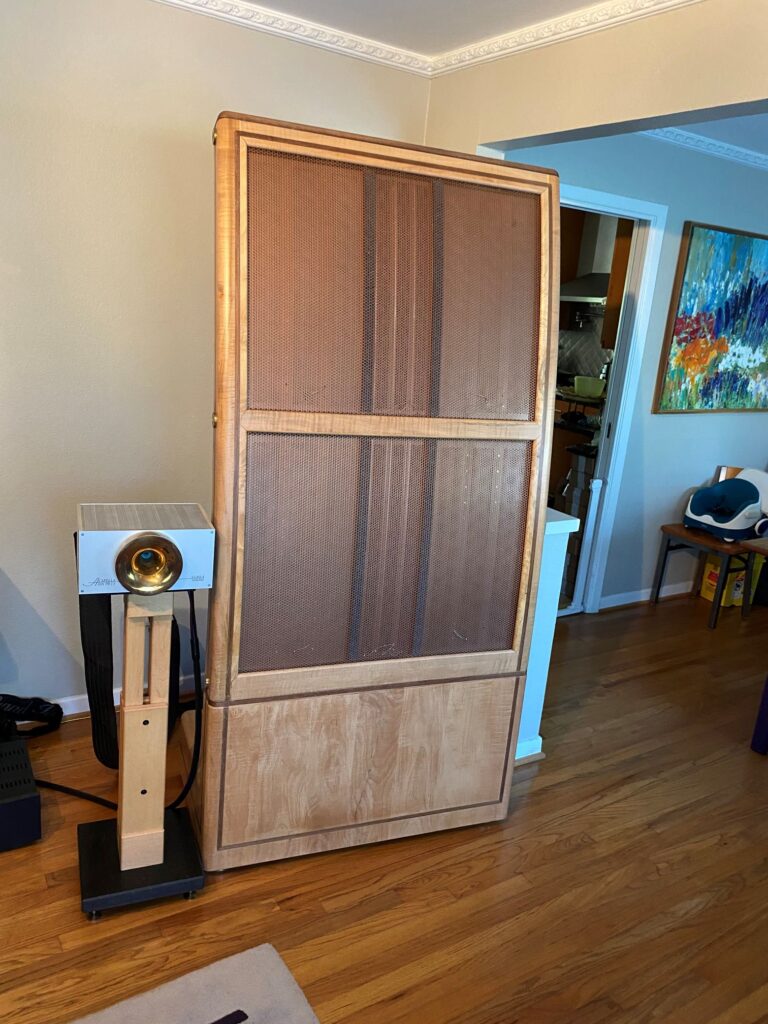
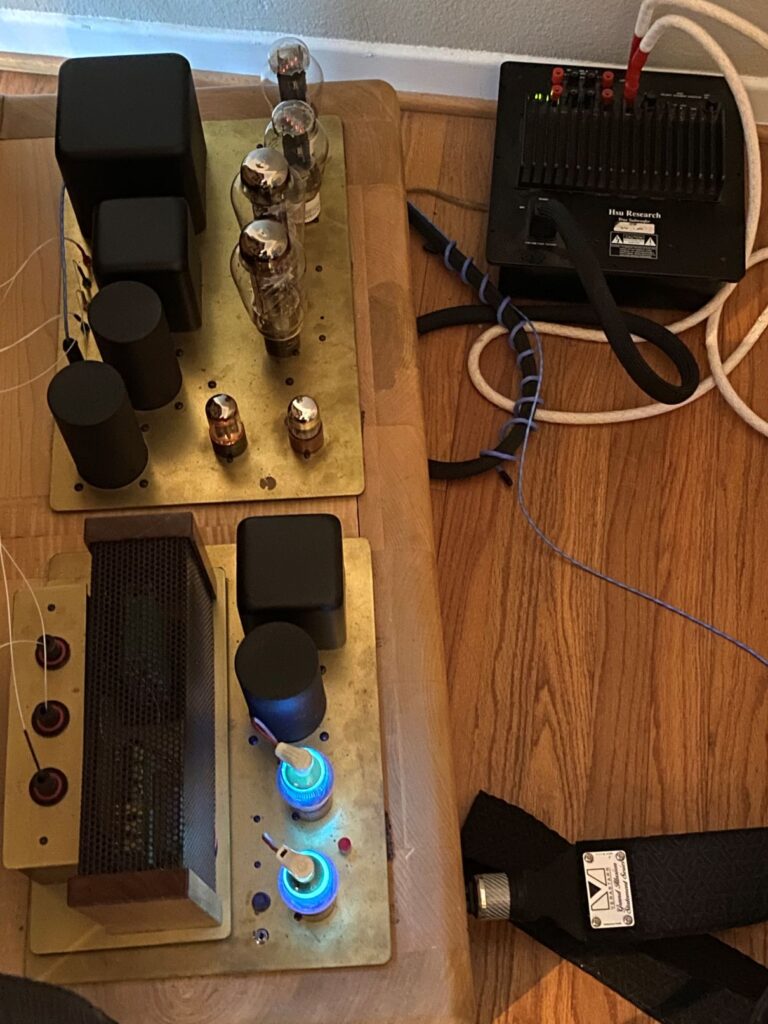
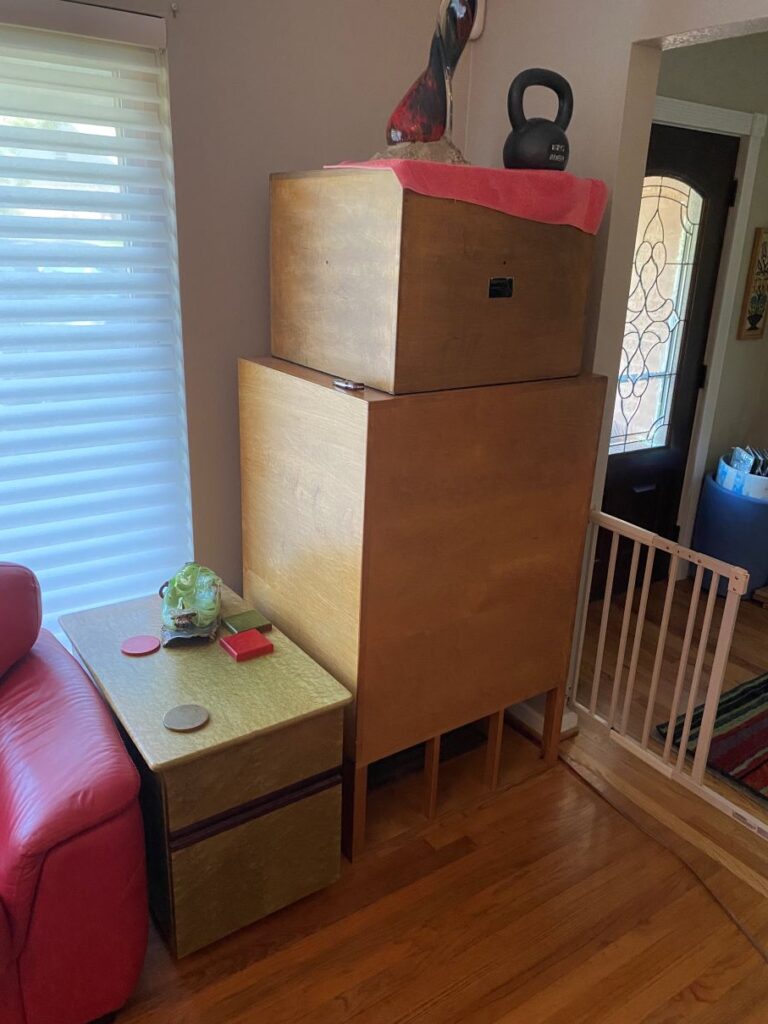
We played a few LPs on the gorgeous Garrard 301 turntable designed by Ijaz Khan. The 301 plinth was an ebony/maple/ebony sandwich and the 301 chassis was made from a solid billet of brass with a 25 lb platter, and the motor driven by an Xact audio/Steve Dobbins power supply. The 12-inch unipivot tone arm was designed by Ijaz Khan, mounted on a heavy brass pod, and the cart a Dave Slagle modified Denon 103 with a boron cantilever and a micro-ridge diamond tip and pure gold wire coils, connected to a 1:20 Slagle SUT (80 percent nickel core and is wound with .9999 pure silver wire).
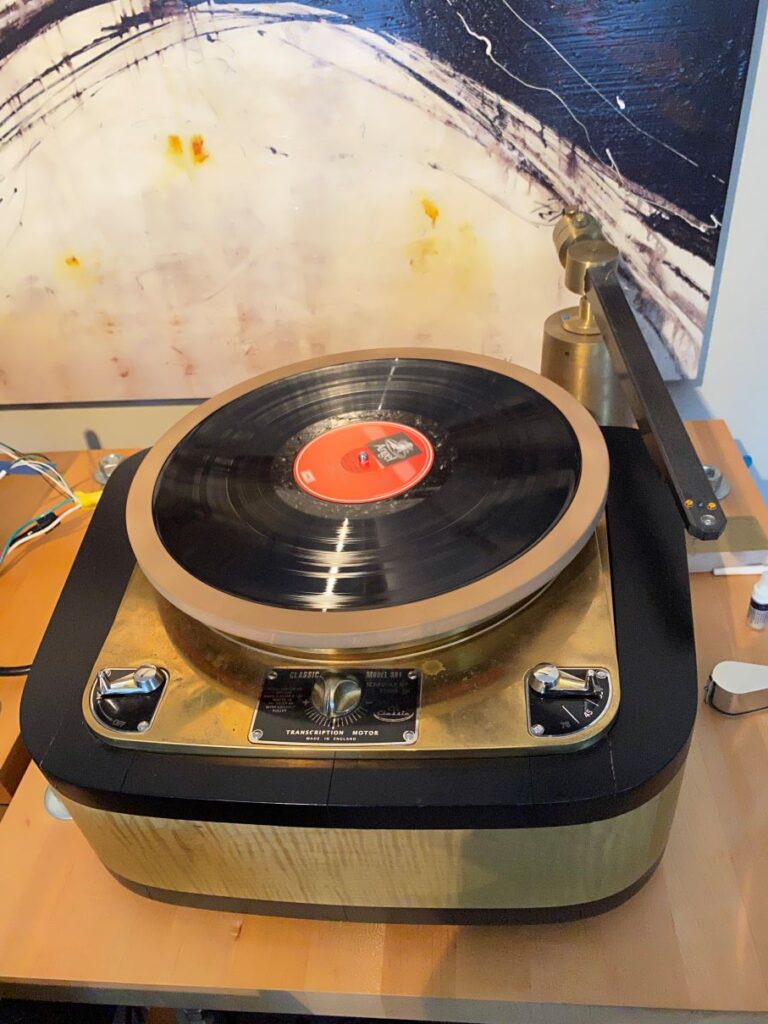
The SUT fed the Allnic H-5000 DHT phono. I suggested that JP change some tubes, and since my trip he got back to me that he swapped to the KR 5u4g with great results
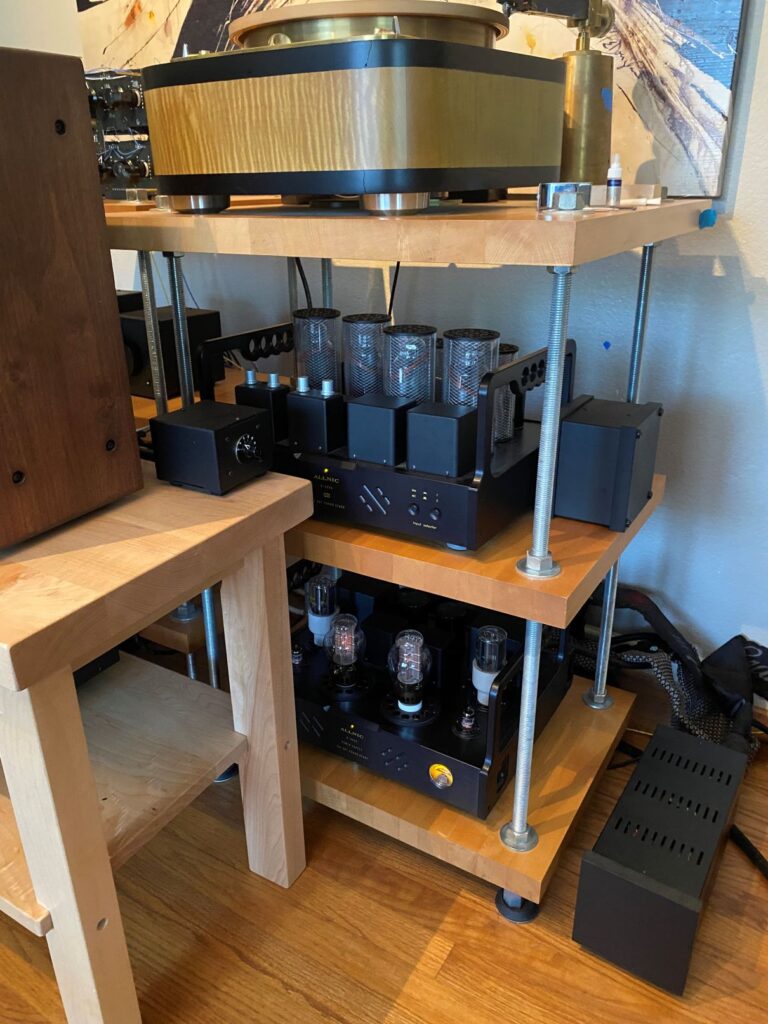
JP previously used the cello palette, but now replaced that with an all-tube inductive equalizer designed by Dave Slagle that has six bands and uses 5965 tubes for gain. Levels are adjusted using transformer volume controls. The output of the equalizer couples to an input of a silver volume control auto-former built by Dave.
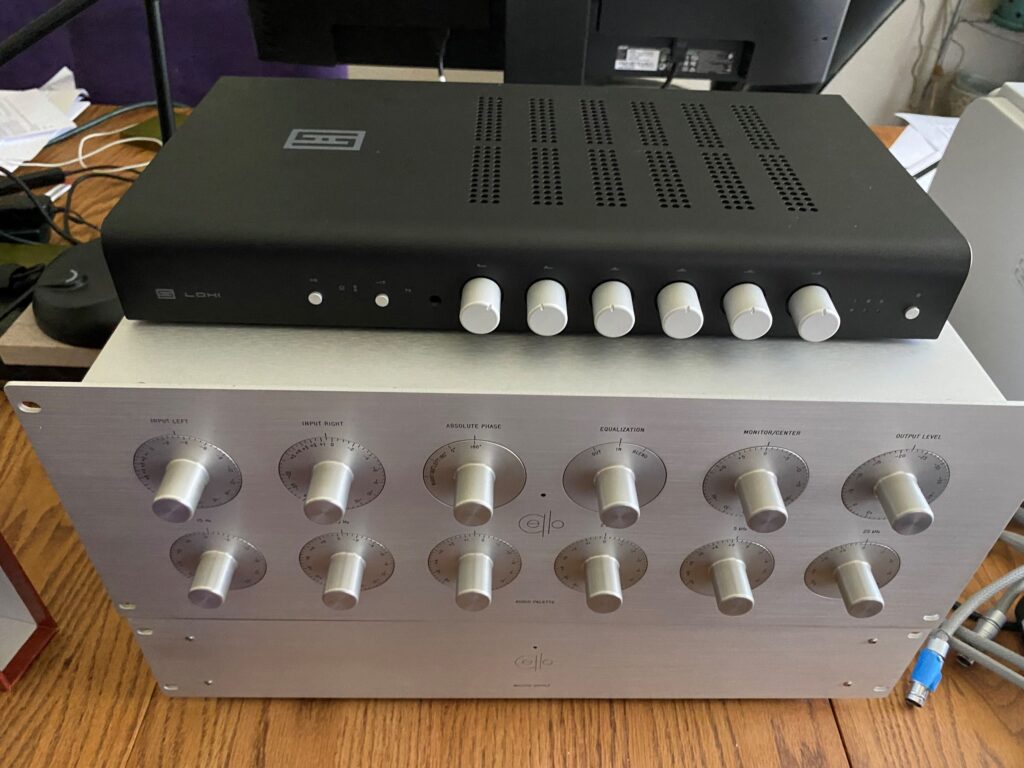
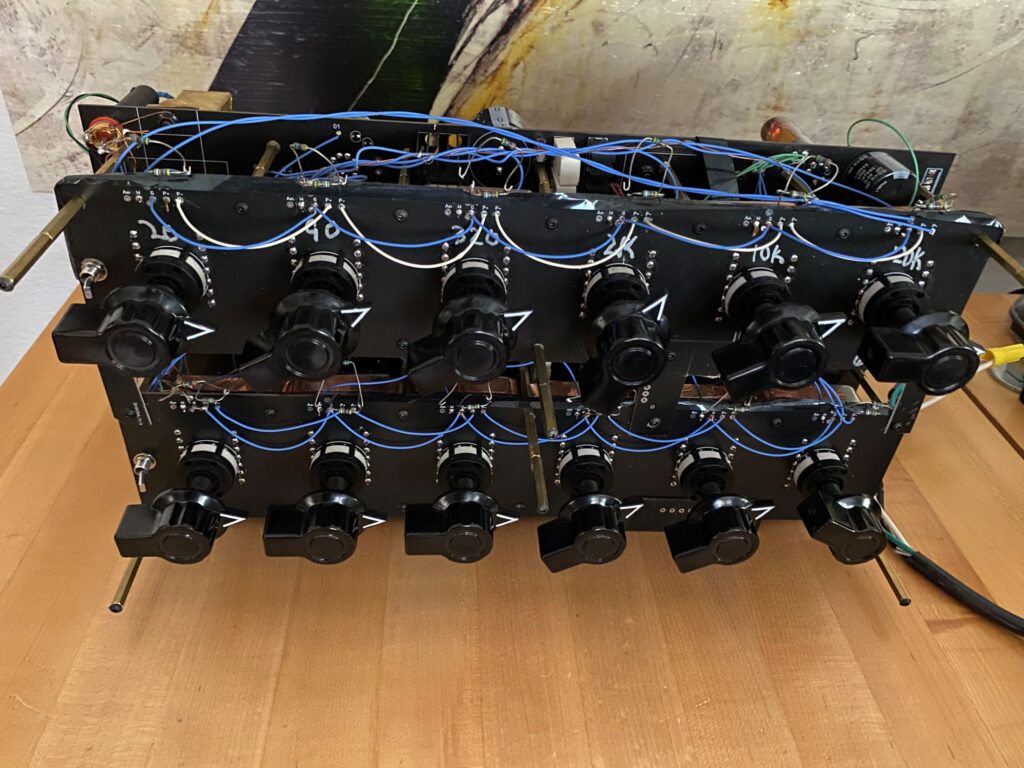
The output of the silver auto-former drives three amplifiers: the amplifiers in the Quads, an EMIA Permalloy type 50 tube amplifier used to drive Acapella plasma tweeters (crossed at 8.5 khz) and a solid-state amplifier used to drive a horn loaded Bruce Edgar subwoofer crossed at 45hz.
Sound:
JP is extremely ritualistic in how he plays LPs – every LP will be clamped with a ring around the platter, and he will refer to the notes on the sleeve to adjust the 10 knobs of the EQ (5 for each channel). But once the sound started flowing, the stacked quads did one of the most realistic piano tones I have heard, the tone, body, flow, energy as realistic as it gets.
Contrary to expected opinion, the stacked quads had no issues playing full symphony – we ran through the many Shostakovich’s, and after doing a compare of Shostakovich’s 5th, I got so excited that I raided JP’s collection and went through my many LPs continuing compares of performances.
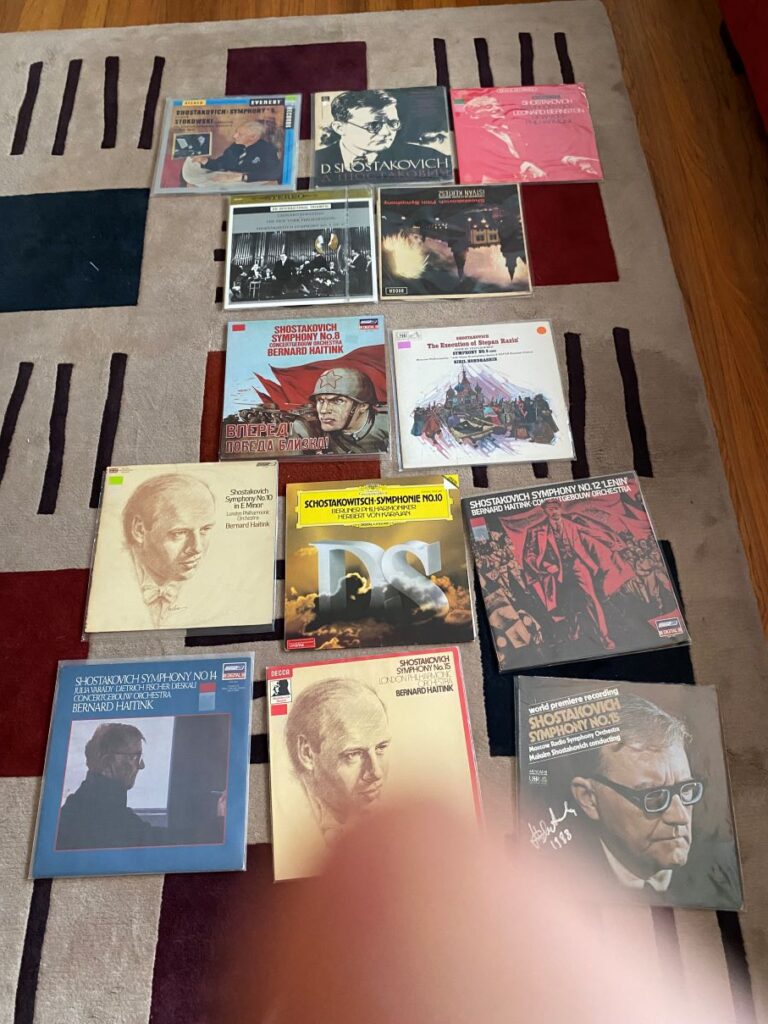
Here is Oistrakh on tape – The Technics RS-1500 has the original head replaced with a Nortronics 9200 professional head that couples to an adjustable step-up transformer designed by Dave Slagle. The SUT has a selectable gain structure from 3db to 18db in 3db increments and is coupled to an EMIA head-amp. The head-amplifier uses D3A tubes and has a LCR based EQ for tape equalization. The EQ uses silver wound inductors and Jupiter silver capacitors. Everything in the signal path is silver wired.
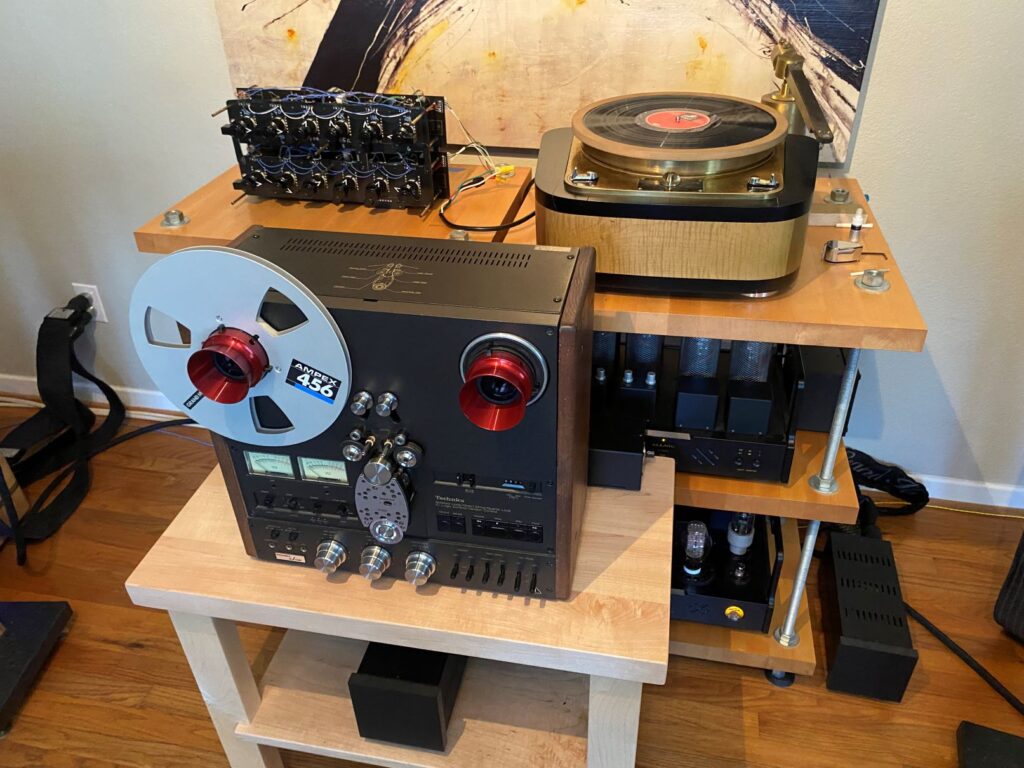
Overall, as far as the sound is concerned, the tone of the piano, and the scale and macrodynamics of the orchestra were excellent, including weight, midbass integration, coherence, and bass. The important thing to keep in mind is that the front to back wall is only 11 ft. It is a small space carved out in his house, and with more space behind and around the speakers, the sound could change quite drastically. One thing I would expect to hear more is a bit more decay, which could come either from more space and/or tube rolling or both.
I would therefore love to hear these in a bigger room, with more space behind, with swapped valves, a couple of different cartridges, and without the EQ, so that I could more isolate the effects of the different aspects of the system.

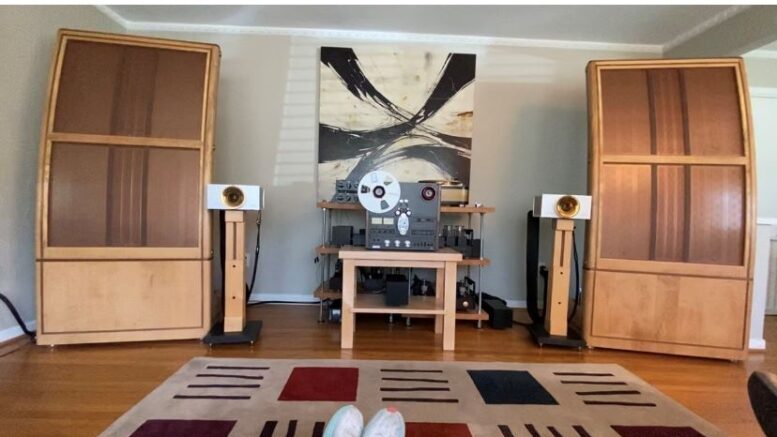
Be the first to comment on "Stacked Quads"